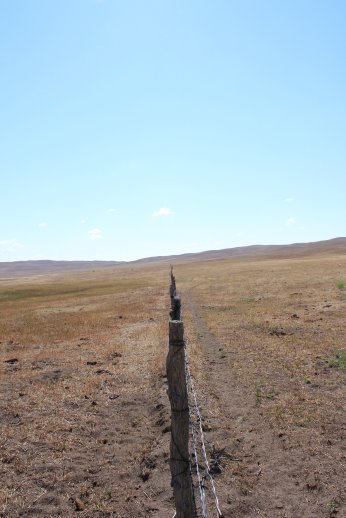
By Bruce Anderson, UNL Forage Specialist
IS THE DROUGHT OVER?
You received some moisture in the last several weeks – maybe rain, snow, or even ice. When it warms up, grass will turn green. So is the drought over? If you think so, or act like it’s over, you could have trouble ahead.
Recent moisture certainly was welcome although most of us probably would have preferred it to have come totally as rain. Still, nearly everyone now should have enough moisture for pastures and hay fields to green up and begin growing as temperatures increase.
Don’t be fooled, however. The drought is not yet over. Being in a drought does not mean there is no rain. It means that the amount of moisture received is much less than average. We have a long ways to go before we start approaching average moisture.
Even if you do receive average moisture during the next few months, pasture and hay production still could be less than normal. Most years we begin the growing season with quite a bit of moisture stored in the soil profile, moisture that accumulated during the previous fall and winter. That did not happen this year so you probably need several inches of rain just to get back to where your soil moisture level normally begins.
Another problem might be with the health and vigor of your pasture and hay plants. Last year these plants received a lot of stress from dry weather, hot temperatures, and in some cases, over use. These plants will not be as thrifty this spring; some may have even died. Those that survived will grow more slowly this spring and have difficulty regrowing rapidly after grazing or cutting. As a result, yields could be lower than average.
What this all means is that you still need to manage your pastures and haylands for drought conditions. It could take a full year or more of average precipitation to recover from last year’s drought.
INCREASE PASTURE CARRYING CAPACITY USING CROSS FENCES
As your cows finish grazing corn stalks, don't put away your electric fence for the summer. You can use it to stretch your pasture.
Electric fence is the easiest and cheapest way to increase production from summer pastures. Dividing pastures with electric cross fences gives you more control of when and where your cattle graze. It helps you encourage cattle to graze pastures more uniformly and completely, including areas they normally avoid. And, it can help you improve the health and vigor of your grass by giving it time to recover and regrow after each grazing. As a result, your grass production and pasture carrying capacity will increase. This will be especially valuable this year following the stress of last year’s drought.
I'm sure you've seen many ads promoting high-powered, high-tensile, imported electric fencing systems. I encourage using these systems in many situations – I use them myself sometimes. But, cross fences do not need to be permanent, nor do they need to be expensive. This is especially true if you already have electric fencing your animals respect. And using fencing equipment you already have gives you an inexpensive opportunity to experiment with where you might eventually place a more permanent cross fence.
The electric fence that keeps your cows on stalks during winter can give you this inexpensive opportunity to try some cross fencing where you have been reluctant to try it before.
So, as spring growth of your pastures begins to slow down, use your winter electric fence to try some extra summer cross fencing of your pastures.
More grass, better gains, and better profits might be the result.
For more UNL Beef information go to http://beef.unl.edu